Fire Watchtower besides Asanogawa-Ohashi Bridge
This photo shows the Asanogawa-Ohashi Bridge, which is registered as a Tangible Cultural Property.
By the way, there is another registered tangible cultural property in this photo besides the bridge.
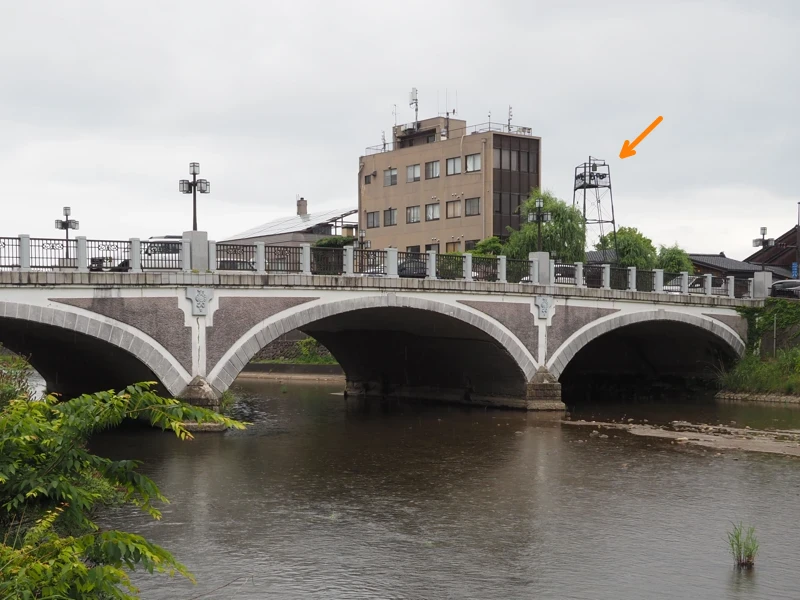
The arrows indicate it.
It is called “Fire Watchtower besides Asanogawa-Ohashi Bridge” which was registered in 2005.
As one gets closer, the shape is slightly different from that of a normal fire watchtower. It looks as if the upper half is unfinished.
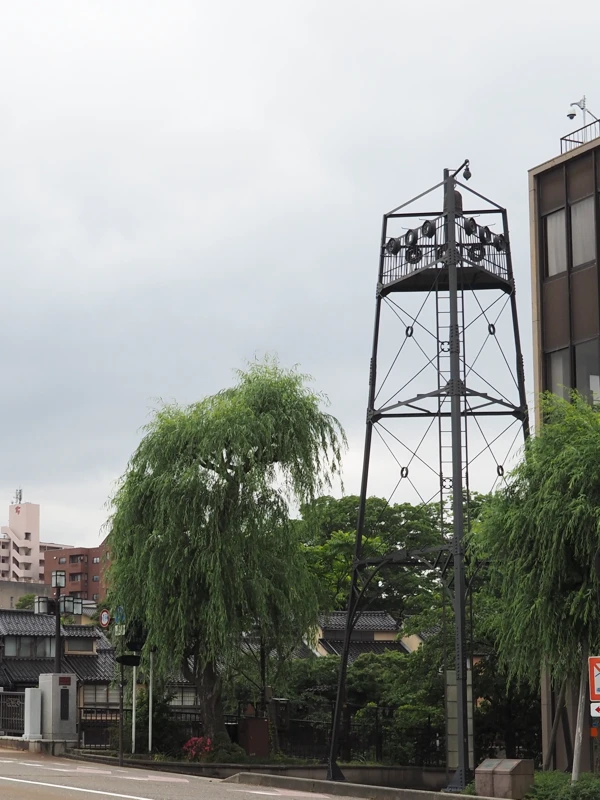
According to the Cultural Heritage Online website, this fire watchtower was built in 1924 and remodeled in 1971. It is steel-framed, and its current height is 11 meters. It is the oldest existing fire watchtower in the city.
The fire watchtower from nearby. A bird happened to be perched in the upper right corner.
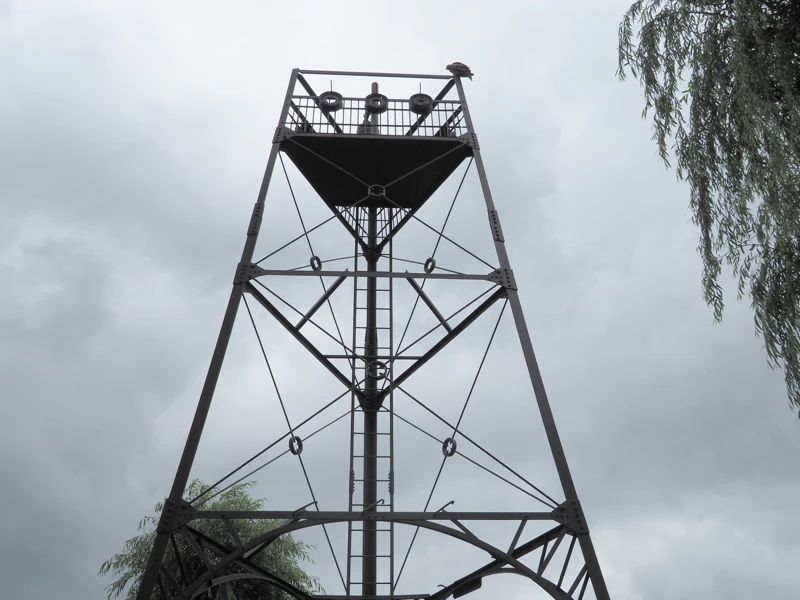
There was a plaque and an explanatory board under the tower, but I did not take a picture of it.
According to the plaque, the upper part was removed in 1971. It used to be taller. (I think it is a misprint that the plaque says the original height was 23 meters.)
Let’s look for past documents.
First, let me quote from “Chronological Table of Kanazawa’s Centennial: Taisho/Showa Era”.
“On November 30, 1924, a 100″shaku" (30meter) high steel tower was erected at the bridges of the Saigawa-Ohashi and Asanogawa-Ohashi. The tower besides Saigawa-Ohashi is at the junction of Hamagurizaka-Slope and Shindo (new road), and the tower besides Asanogawa-Ohashi River is by the Morishita-cho Police Station."
“In April 1941, the bell towers at the Saigawa-Ohashi and Asanogawa-Ohashi bridges were replaced with electric sirens, which sounded simultaneously with the siren of the city office by a switch."
The following is from “The history of Kanazawa City, Contemporary Edition, Vol. 2."
“The steel-frame bell tower, 33 meters high, was built in 1924, the same year the permanent fire brigade was established, at the two bridges beside the Saigawa-Ohashi and the Asanogawa-Ohashi.“
The two numbers do not match because 100 shaku is supposed to be 30.3 meters, but perhaps the 100 shaku was chosen to be a more simple number. In any case, there were two 30-meter fire watchtowers in the city.
But they were officially called “alarm bell towers” rather than fire watchtowers.
The fire watchtower beside the Asanogawa-Ohashi still remains, but the one by the Saikawa-Ohashi Bridge seems to have already been removed. Where was it located?
I checked the location of the “Hamagurizaka-Slope”, then found the tower in an aerial photograph.
In the photo below (taken in 1975), it stands to the left of the Saigawa River.
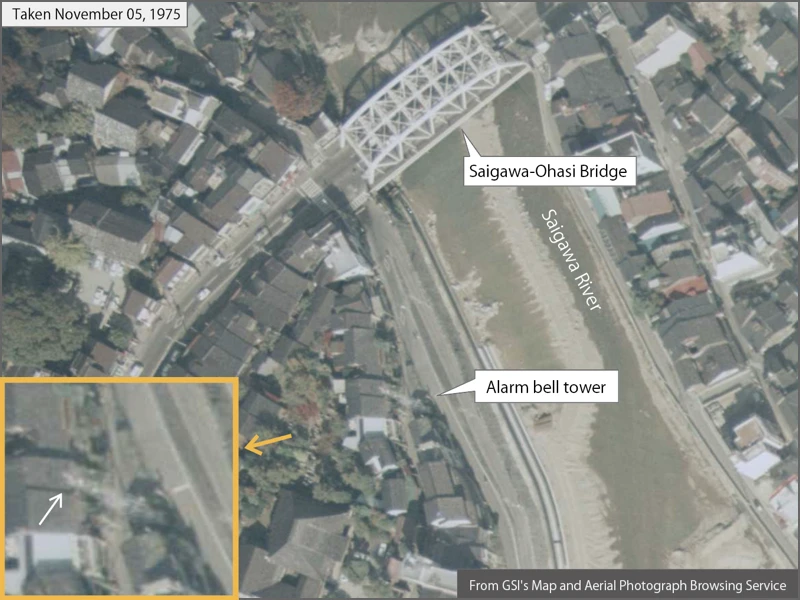
It is not easy to recognize the tower, so I enlarged the area around the tower in the lower left corner. The white arrow points to the tip of the tower.
The alarm bell on top of the tower was replaced by a siren in 1941, and after the World War II it was used for time signals, but after that it was used for water release warning at the dam. I searched and found a mention that it was dismantled in 1993.
I learned from my research to write this article that another warning siren is now being built near the Saigawa-Ohashi Bridge. I looked back to see if I could find it in any of my photos, and found one.
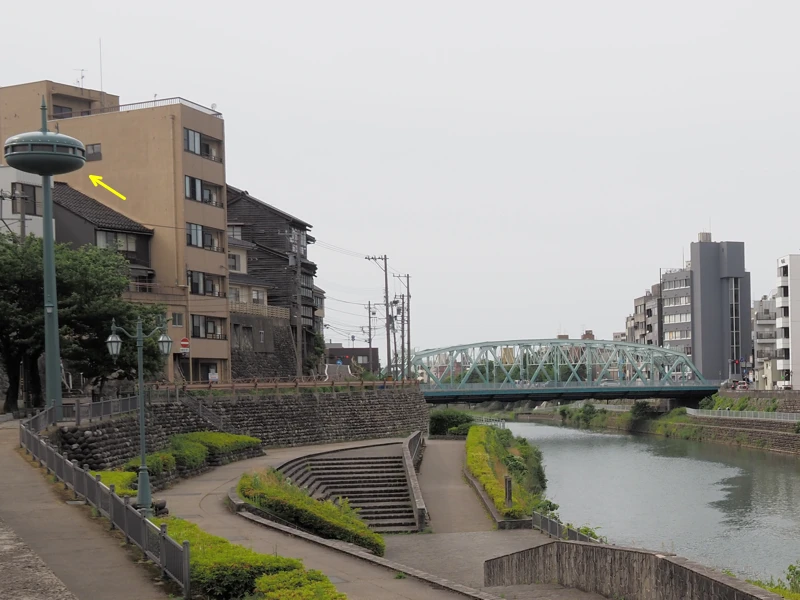
The tower indicated by the yellow arrow on the left is the alarm siren.
Let’s go back to the old alarm bell tower.
I looked for a photo of the tower before it was trimmed, and found one, although it is not clear. (from “Records of Kanazawa City celebrations for the Imperial Enthronement".)
In November 1928, the Emperor’s enthronement was celebrated with festive events in various areas. Kanazawa City compiled a record of these events and published it the following year.
According to the report, the Kanazawa City Electricity Bureau posted banners reading “Banzai” on two alarm bell towers by the Saigawa-Ohashi and Asanogawa-Ohashi from November 8 to 26. The banners were trapezoidal in shape and 9 m long.
So they were the Electricity Bureau, they used light bulbs and floodlights to illuminate the banners.
A photo of the light shining is attached in the upper left corner of the image.
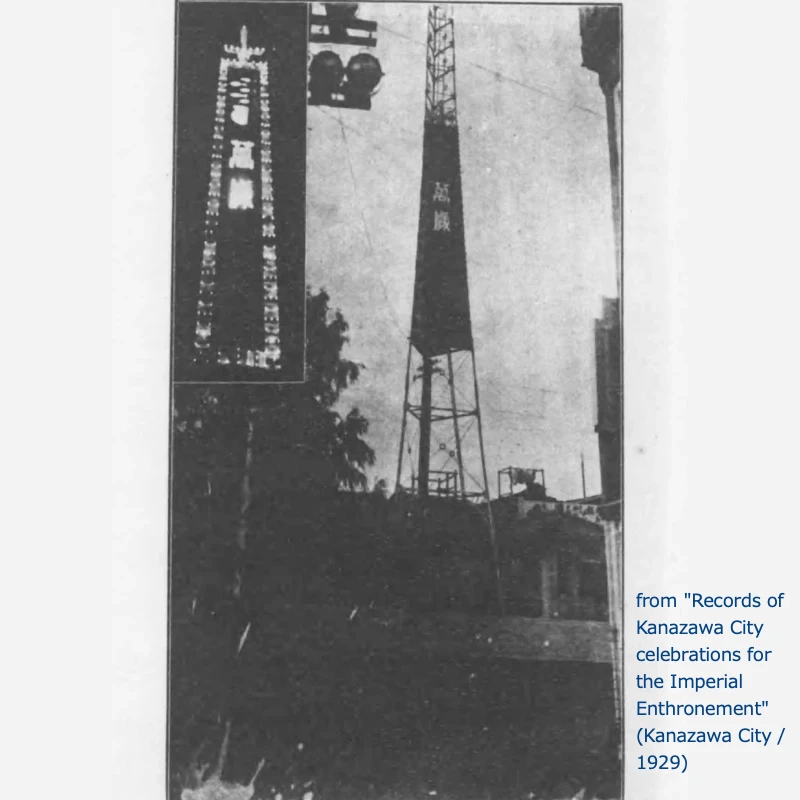
Although it is impossible to determine whether this photo is by the Saigawa-Ohashi or Asanogawa-Ohashi, it shows that a steel tower of this height was erected.
Furthermore, in the “History of Ishikawa Prefecture” published in 1933, there is a photo showing the Asanogawa-Ohashi and the steel tower.
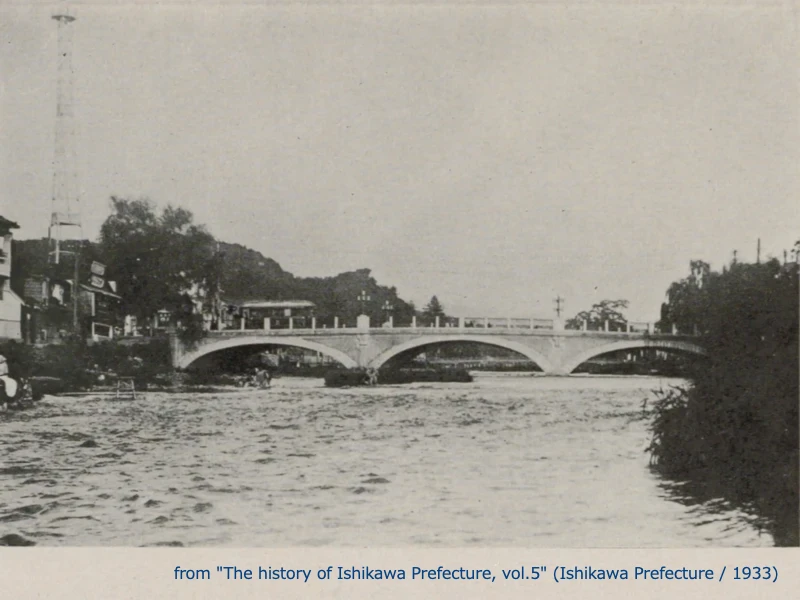
This photo was taken from downstream. The alarm bell tower can be seen on the left.
Here is a photo I took from the “Nakanohashi Bridge” downstream; it is fun to see the bridge almost unchanged from 90 years ago.
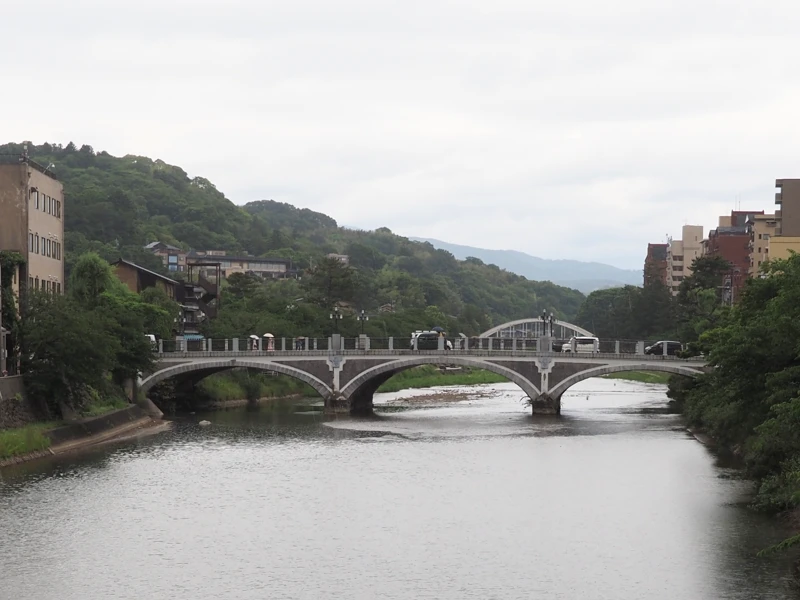
The photographer who was in charge of taking pictures for the Ishikawa Prefectural History seemed to be in high spirits, and climbed up this steel tower to take pictures from the top of the tower. That is the next photo.
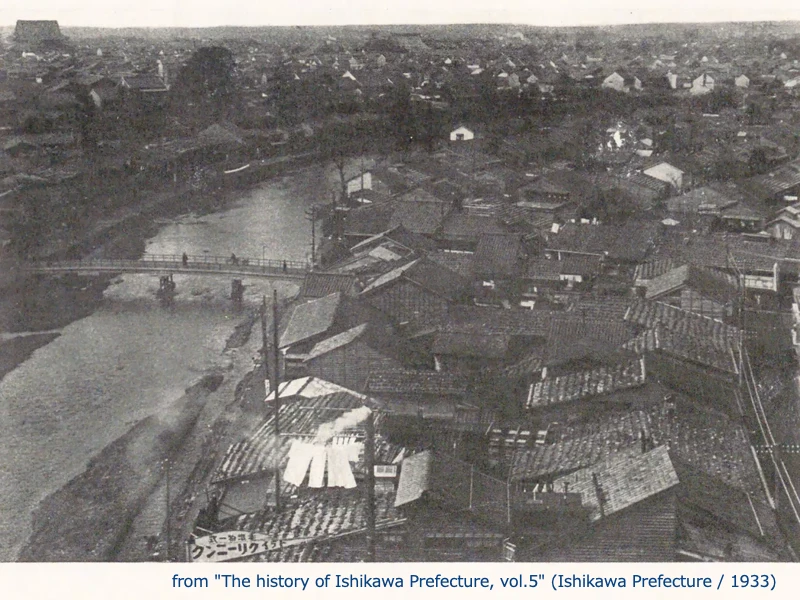
The description of the photo reads as follows,
“There is a 33-meter-high reinforced concrete fire watchtower on the bank of the Asanogawa-Ohashi Bridge. The agile photo crew climbed up to it, with the camera on his shoulder. The tripod was set up under the bell, the lens pointed downstream, and the result was this photograph."
At that time, Kanazawa City was encouraging the replacement of roofs for fire prevention, but this photo shows many shingles roofs with stones as weight on it.
The “Nakanohashi Bridge” is shown on the left, but as noted in a previous article, all bridges except the Asanogawa-Ohashi were washed away in the 1953 flood, so this bridge is not the one that exists today. In the photo above, the piers are wooden, but the current piers are made of reinforced concrete.
It was interesting to see the connection between the past and the present as I researched to write this article.
[Reference] (all written in Japanese)
“Records of Kanazawa City celebrations for the Imperial Enthronement" (Kanazawa City / 1929)
“The history of Ishikawa Prefecture, vol.5" (Ishikawa Prefecture / 1933)
“Chronological Table of Kanazawa’s Centennial: Taisho/Showa Era" (Kanazawa City History Compilation Office / Kanazawa City / 1967)
“The history of Kanazawa City, Contemporary Edition, Vol. 2." (Compiled by Kanazawa City History Compilation Deliberation Committee / Kanazawa City / 1969)
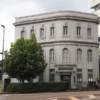
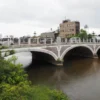
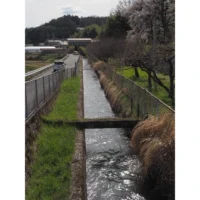
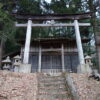
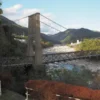
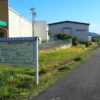
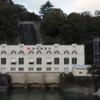
Discussion
New Comments
No comments yet. Be the first one!